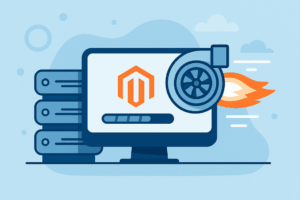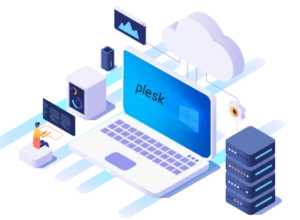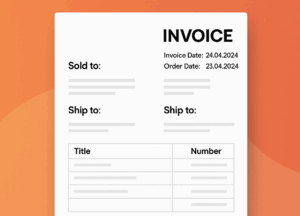
Mastering cloud migration: strategies and best practices
Migrating your applications, data, and infrastructure to the cloud can be a transformative step, unlocking new capabilities and efficiencies that traditional on-premises environments often struggle to provide. By moving to the cloud, organizations can tap into on-demand scalability, pay-as-you-go pricing, global reach, and easy access to advanced services like managed databases, machine learning, and serverless computing. However, the path to a successful cloud migration is rarely straightforward. It involves careful planning, the right strategy, and a commitment to continuous improvement.
Understanding the importance of cloud migration
In today’s fast-paced digital landscape, the ability to adapt and scale quickly is vital. On-premises systems can require significant upfront investments in hardware and lengthy procurement processes to handle peak demand. In contrast, the cloud provides a flexible foundation that can scale resources up or down based on your current needs. This elasticity not only reduces costs but also streamlines operations, making it easier to handle sudden traffic spikes, roll out new features, or experiment with emerging technologies.
Cloud migration also encourages better development practices. It supports DevOps methodologies, continuous integration (CI), and continuous delivery (CD) pipelines, accelerating time to market. As your team embraces the cloud, they can adopt infrastructure-as-code (IaC) approaches, automate routine tasks, and focus on innovation rather than managing hardware.
Key migration strategies
Selecting the right migration strategy depends on factors like your application architecture, performance requirements, compliance needs, and long-term goals. Common strategies include:
Lift-and-shift
This approach involves moving applications to the cloud with minimal changes. It’s often the fastest way to get started and can quickly free you from hardware maintenance. However, because it doesn’t fully optimize for cloud-native features, additional refinements may be needed later.
# Example: Using AWS CLI to launch a basic EC2 instance for lift-and-shift
aws ec2 run-instances \
--image-id ami-0123456789abcdef0 \
--instance-type t3.medium \
--key-name my-keypair \
--security-group-ids sg-12345678 \
--subnet-id subnet-0123456789abcdef0
Replatforming
Replatforming makes moderate changes to better fit the cloud environment. For instance, you could shift an application from on-premises virtual machines to a managed container platform. This reduces management overhead while still preserving much of your original application architecture.
Refactoring
Refactoring involves rearchitecting your application to embrace cloud-native patterns. You might break a monolith into microservices, use serverless functions, or adopt managed streaming services. Although this requires more effort, the payoff includes improved agility, better cost efficiencies, and faster iteration cycles.
Rebuilding or replacing
In some cases, it’s more effective to rebuild the application from scratch with a cloud-native mindset or replace it with a SaaS solution. While this approach can be time-consuming, it often results in an application that is better aligned with modern scalability, reliability, and maintenance practices.
Planning for a successful migration
A thorough plan helps ensure a smooth migration. Start by defining what you want to achieve—be it cost savings, better performance, access to advanced services, or improved agility. Next, audit your current infrastructure, applications, and data flows to understand dependencies and complexity. With these insights, you can create a phased roadmap that gradually moves workloads, starting with less critical systems before tackling high-value, mission-critical applications.
Infrastructure-as-code tools like Terraform can help maintain consistency and reproducibility in your environment:
# Example Terraform snippet for provisioning a compute instance
resource "aws_instance" "web_server" {
ami = "ami-0123456789abcdef0"
instance_type = "t3.medium"
tags = {
Name = "MyWebServer"
}
}
Best practices for cloud migration
- Security and compliance: Implement identity and access management (IAM), encryption, and continuous monitoring from day one. Ensure adherence to compliance standards like GDPR, HIPAA, or PCI-DSS.
- Performance optimization: Leverage load balancers, auto-scaling groups, and caching services. Continuously measure latency, throughput, and resource utilization, then adjust configurations as workloads evolve.
- Cost management: Use cost-monitoring dashboards, right-size instances, and consider reserved or spot instances to reduce expenses. Regularly review your spending to avoid surprises.
- Observability: Adopt a robust observability stack that includes logging, metrics, and tracing. A well-instrumented environment helps identify issues early and ensures reliable user experiences.
- Training and culture: Invest in upskilling your team. Encourage a DevOps culture, knowledge sharing, and continuous learning, helping everyone become more comfortable and proficient with cloud services.
Managing complexity and overcoming challenges
Cloud migrations can be challenging due to legacy dependencies, data gravity, regulatory constraints, or complex networking requirements. Consider the following tips:
- Use migration tools: Providers offer specialized tools and frameworks to simplify data transfers, assess application compatibility, and validate configurations.
- Hybrid and multi-cloud approaches: If certain workloads must remain on-premises or you want to avoid vendor lock-in, consider a hybrid or multi-cloud strategy. Just ensure consistent networking, security, and observability across environments.
- Test thoroughly: Create staging or test environments to validate performance, resilience, and failover strategies. This helps catch issues before impacting production.
- Have a rollback plan: Define how you can revert changes if something goes wrong. Backups, snapshots, and DNS fallback strategies can minimize downtime and risk.
Post-migration optimization and continuous improvement
The cloud environment should continuously evolve with your organization’s needs. Regularly review resource usage, adjust instance sizes, and explore new services to enhance performance or reduce costs. Consider managed services that free your team from routine maintenance, enabling them to focus on strategic initiatives.
Using containers, serverless architectures, and IaC tools can improve portability and agility, ensuring you stay flexible as markets and technologies change. Gather feedback from developers, operations teams, and end-users to guide ongoing improvements and refinements.
Cloud migration is more than just shifting workloads—it’s about unlocking scalability, agility, and innovation. By choosing the right strategy, planning thoroughly, following best practices, and embracing continuous optimization, organizations can fully realize the benefits of the cloud. Over time, these efforts lead to more resilient architectures, faster delivery cycles, smarter cost management, and a stronger competitive position in an ever-evolving digital world.
Need Expert Help?
We’re here to support you and manage your tasks.






